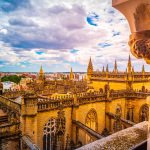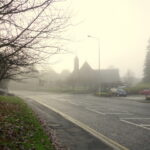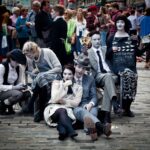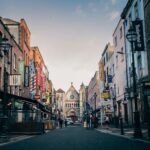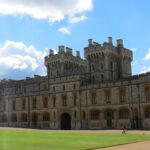A Maze to Amaze : Istanbul
A Maze to Amaze : ‘Culture” is a flexible conception but if you interpret it to mean the whole range of human experience and achievement, then nowhere is better qualified to be the cultural capital of Europe than Istanbul, nee Constantinople. In all European travel there is no spectacle more tremendous than the sight of Istanbul massed beside the sea – a solidification of history, jumbled houses and docks and palaces along the shore, mighty domes and soaring minarets, ships and ferries swarming everywhere, rumbling traffic over bridges – a timeless metropolis, familiar to travelers for a thousand years and of such consequence that for centuries it was known to half the world simply as “The City”. Technically it is, of course, only debatably European at all.
It is the chief city of republican Turkey, which is not yet a member of the European Union, and it is as monumentally a western gateway of Asia as it is an eastern portal of Europe. The moment travellers step ashore in Istanbul they know they are in a city sui generis, partly familiar, partly marvelously exotic. It has been in its time pagan, Muslim, Christian and officially secular. The most celebrated of all its monuments, Hagia Sophia, began as a church, became a mosque and is now a museum and to my mind this overlapping of civilizations makes it all the more suitable as the cultural capital of a continent becoming inexorably more various as the generations pass.
But still the fascination of the magnificent old place is its Turkishness, the ultimate patina (so far) that covers its successive layers of historical memory. Nowhere in Europe is more suggestive than the rambling enclave that is the Topkapi Palace, where once the Ottoman sultans held court, where the harem gossiped and the executioners sharpened their blades and from whose gardens you can look out across the fateful waters of the Sea of Marmara and the Bosphorus. No refreshment break is more satisfying than a cup of thick coffee and a sweetmeat taken at a table beside the Golden Horn, frequented by seafarers since the days of Homer. You can imagine in these streets the imperial legionaries of Constantine himself, the janissaries of Islam, looting Christians from Venice on their way to the Crusades, merchants from all the nations setting up their stalls in its famous markets.
Lets explore some hidden gems of this fascinating city:
Sahaflar Carsisi (the book market) (Map)
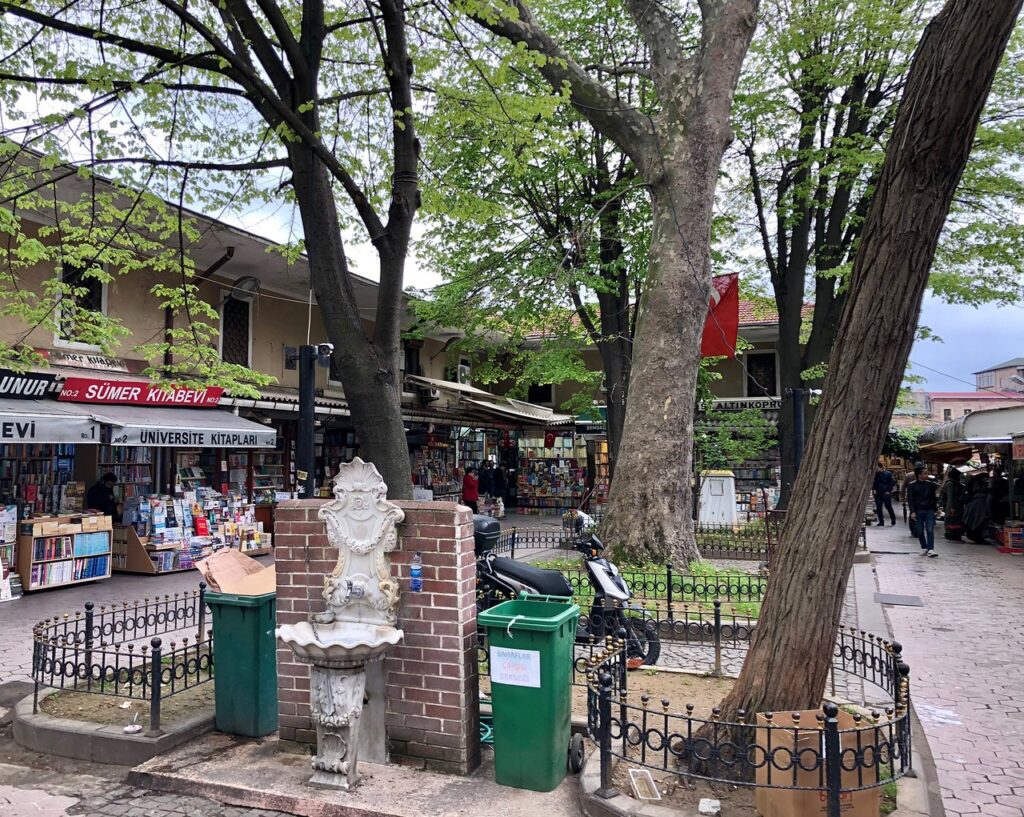
In some ways the book market preserves the atmosphere of the bazaar as it might have been two centuries ago, when merchants gathered by their trades and the emphasis was not on tourists. It occupies a courtyard between the Bayezid Mosque and the Grand Bazaar, on the same site as the old Byzantine book and paper market. Overseen by a bust of Ibrahim Muteferrika, the first Ottoman printer, dozens of tiny bookstalls have shelves crammed with textbooks, novels and holy and foreign books. New and second-hand books in English jostle for space in the highly recommended Dilmen Kitabevi bookstore, where a strong-minded reader in search of humour might look out for the almost scholarly Sexual Life in Ottoman Society. Through the far gate you’ll find a tiny market for old coins – a history lesson in itself at this crossroads of continents. –
Rustem Pasha Mosque (Map)
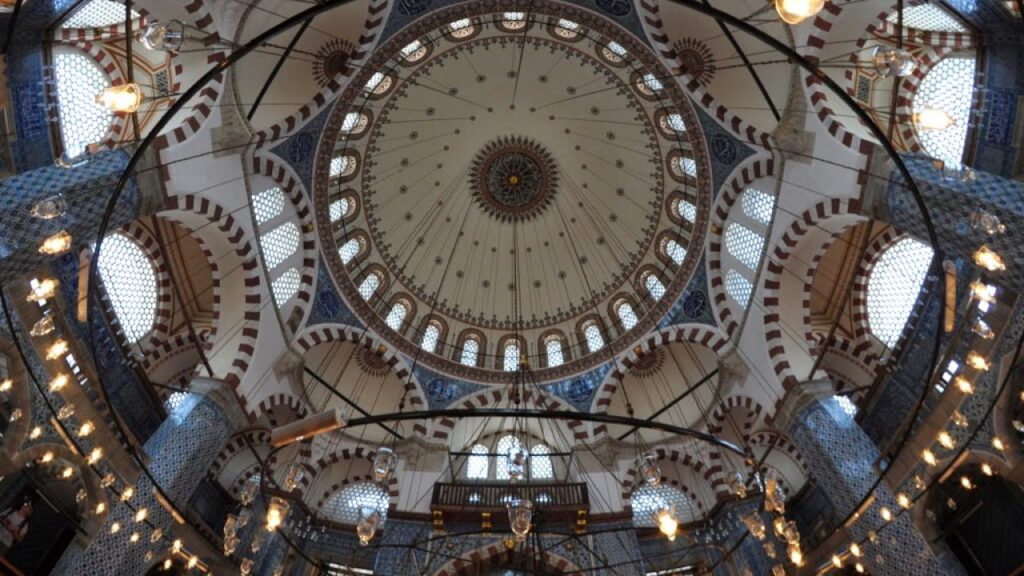
It is hardly off the beaten track but getting here is half the fun. Rustem Pasha Mosque is a tiny gem squeezed into the bazaar, with its undercroft serving as shops and approached by a winding staircase. You come out on to a raised courtyard, quite unexpectedly – and no wonder, because this mosque was built with characteristic dexterity by Sinan, the great Ottoman architect, in 1563. It is one of the decorative wonders of Istanbul, sparkling with a magnificent array of true Iznik tiles from the greatest period of the tile maker’s art: the rich red colours were perfected at this time and then the recipe was lost.
Hasircilar Carsisi (Strawmat Weavers Market) (Map)
When in Eminönü, it is impossible to miss the Yeni Valide Sultan Mosque, and for tourists looking for the major sightseeing spots, it’s impossible to miss Eminönü. But just to the west of the huge Yeni Valide complex is a smaller mosque called Rüstem Pasha, built by the great Mimar Sinan in the 16th century. It can be easy to miss what with the 17th century Yeni Valide Sultan next door and Sinan’s own Suleymanie Mosque towering above it on a hill just south. But Rüstem Pasha is worth a visit in its own right, especially to see the intricate tilework, and its immediate environs house the Straw Weavers’ Market, or Hasırcılar Çarşısı.
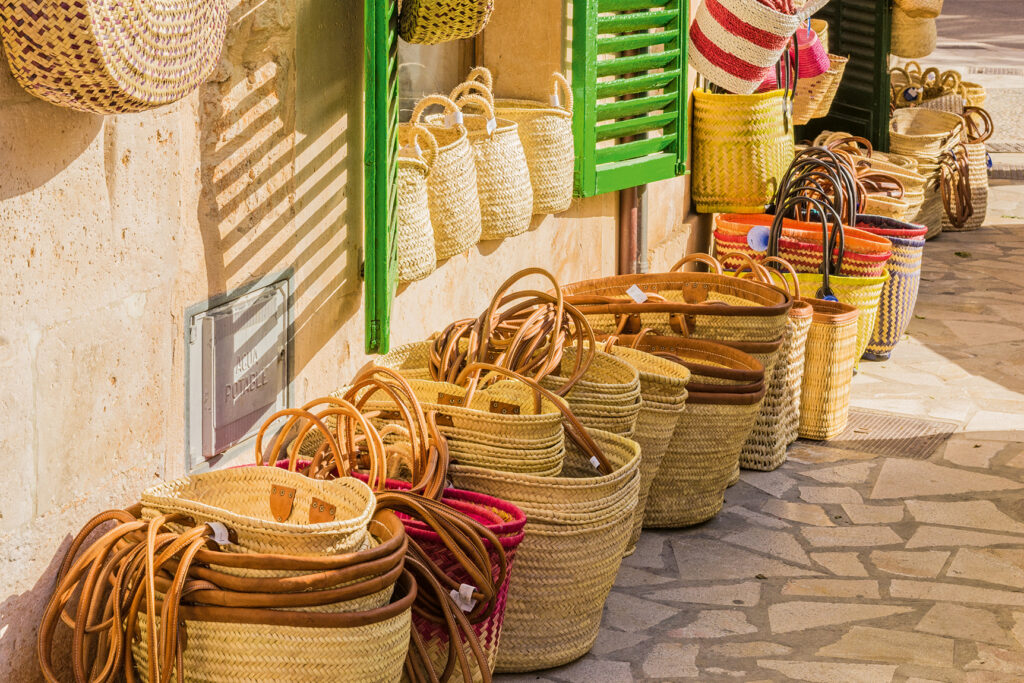
This market is largely outdoors, but covered by awnings over narrow, maze-like streets, and it’s a very endearing place when you’re not being misled by Google Maps. True to its name, it has many stalls selling brooms, baskets, linens, towels, and the like. However, it has plenty of variety in its merchandise, to go along with nice little tea shops and a few restaurants and food sellers. When you’re settled into the city and done touring the bigger bazaars, you may decide to do some real shopping here. It is full of locals, there were very few pushy people, and it seemed like an overall more authentic market experience. A note: you will get lost, so bring a GPS-enabled phone, or at least don’t make any pressing appointments for just after your visit.
Çukurçeşme Hanı (Map)
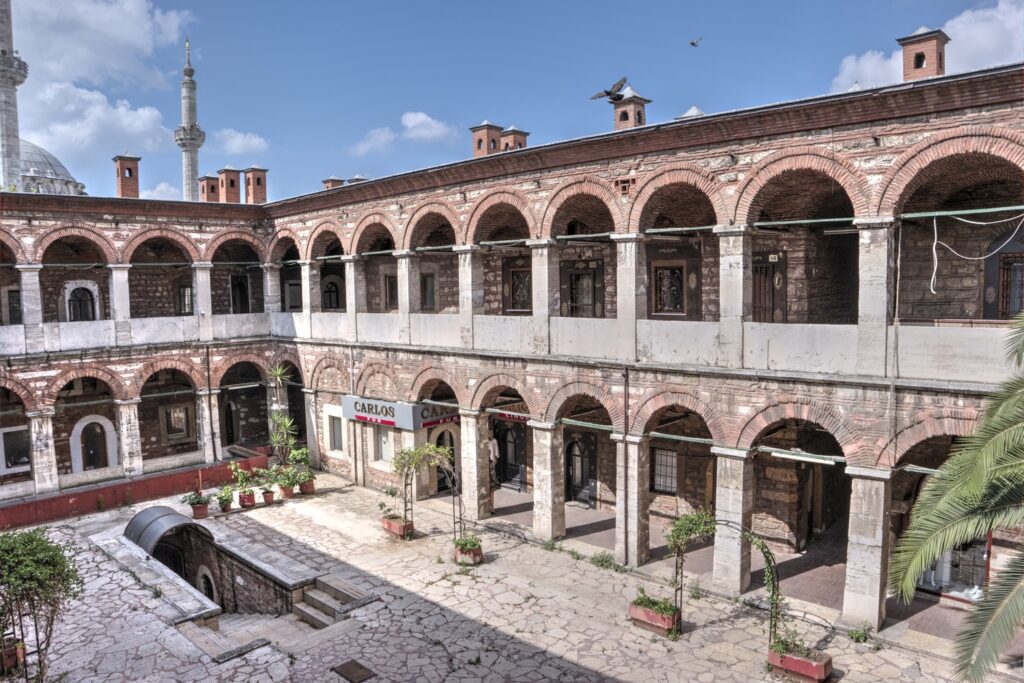
The building was erected under the name Siphahi Han in 1763 on the orders of Sultan Mustafa III. The siphahi were the Ottoman counterparts of European knights and, as cavalrymen, together with the janissaries, they formed the core of the sultan’s army. Siphahi Han was a part of the Laleli Mosque Complex. In addition to the mosque, erected in the Baroque style, the complex consisted of many buildings, including a madrasah, i.e. a Muslim theological school. Almost all of these buildings have disappeared from the face of the earth over the centuries. For example, the madrasah burned down in 1911. Today, in addition to the mosque itself, the preserved buildings include the mausoleum of Mustafa III and his immediate family, built on an octagonal plan, as well as the Stone Inn. The irregular plan of the inn resulted from the need to fit it into the densely built-up urban tissue of the 18th-century Istanbul. The inn consists of two courtyards of different sizes surrounded by two-storey arcades and an elongated corridor connecting it with Fethibey Street. In both courtyards, there are octagonal fountains, unfortunately not working at present. The building resembles a secret garden hidden in the city centre.
Crimea Memorial Church (map)

A tiny fragment in the mosaic of Istanbul’s history, the Crimea Memorial Church was designed by British architect G.E. Street and built in 1858-68 on land donated by the sultan. It is a remarkable survivor from a period of rapid change as the Ottoman Empire opened itself to Western influences. Moribund by the 1980s, the Anglican church was reopened with the enthusiastic help of Assyrian refugees who found shelter here in the 1990s. Look out for Mungo McCosh’s splendidly painted chancel screen and the colourful Sunday congregation (Sunday Mass is at 10am). If you appear nice enough you might even be invited back to the vicarage by Father Ian Sherwood.
Arab Mosque (Map)
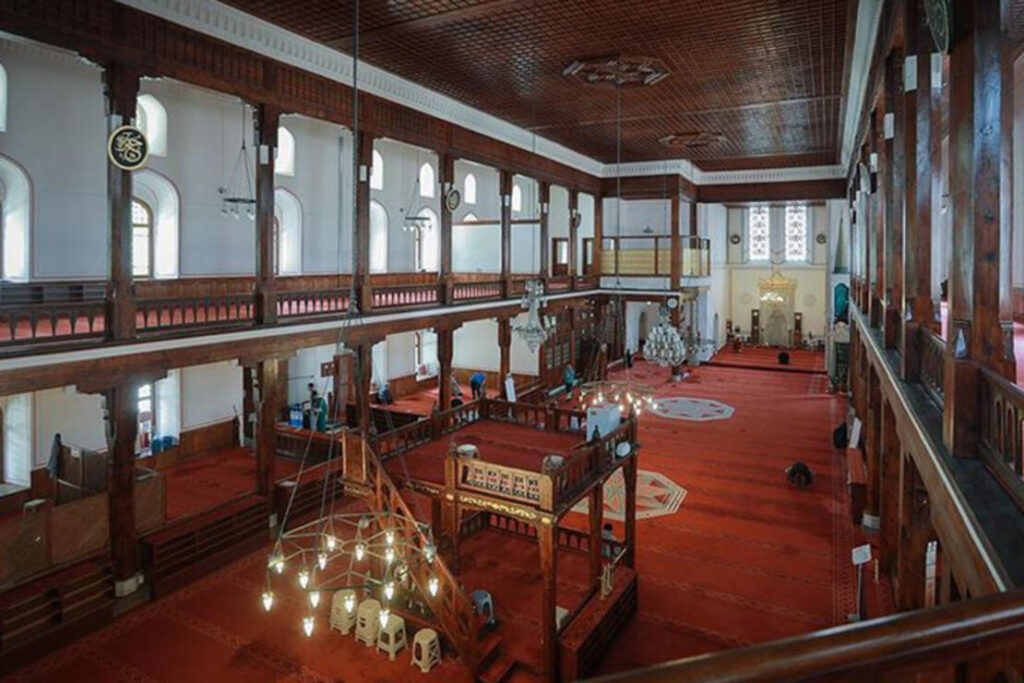
Located in Galata, Arab Mosque (Arap Camii) is the only mosque in Istanbul that was converted from a Roman Catholic Church. Originally it was built in the fourteenth century and its name was the Church of San Domenico (Saint Dominic), since it was commissioned by Dominican monks. There are tens of Byzantine Orthodox churches in Istanbul that were converted into mosque such as Hagia Sophia, Chora Museum, and Zeyrek Mosque; however, Arab Mosque is the only Roman Catholic church converted into a mosque in the city of Istanbul. Gothic style bell tower of the Arab Mosque is functioning as a mosque minaret. Please note : During the restorations in the first half of the twentieth century, several Genoese tombstones were found underneath the structure, and now they are exhibited at the Istanbul Archaeological Museums.
Galata Greek Primary School (Map)

Located in Karaköy – not too far from hip cafés and coffeeshops of Karaköy – Galata Greek Primary School (Galata Rum İlkokulu in Turkish) has been functioning as a marginal contemporary art space since 2012. Together with Zografyon Greek High School and Zapyon Greek High School, Galata Greek Primary School (Σχολή Γαλατά) was built at the end of the nineteenth century for the Greek community in the district. However, similar to other Greek schools in the city Galata Greek Primary School stopped functioning in 1980s due to the demographic and political changes both in Turkey and Istanbul.
Galata Greek Primary School was built at the end of the nineteenth century on the eastern slope of Galata Hill. The building is a successful fusion of Neo-Classical and Baroque architectural styles with a typical Neo-Classical façade. The façade of the building was cleaned and restored just before the opening of the 15th Istanbul Biennial taking place b. Moreover, Galata Greek Primary School is one of the six venues of the 15th Istanbul Biennial.
SALT Galata Library (Map)
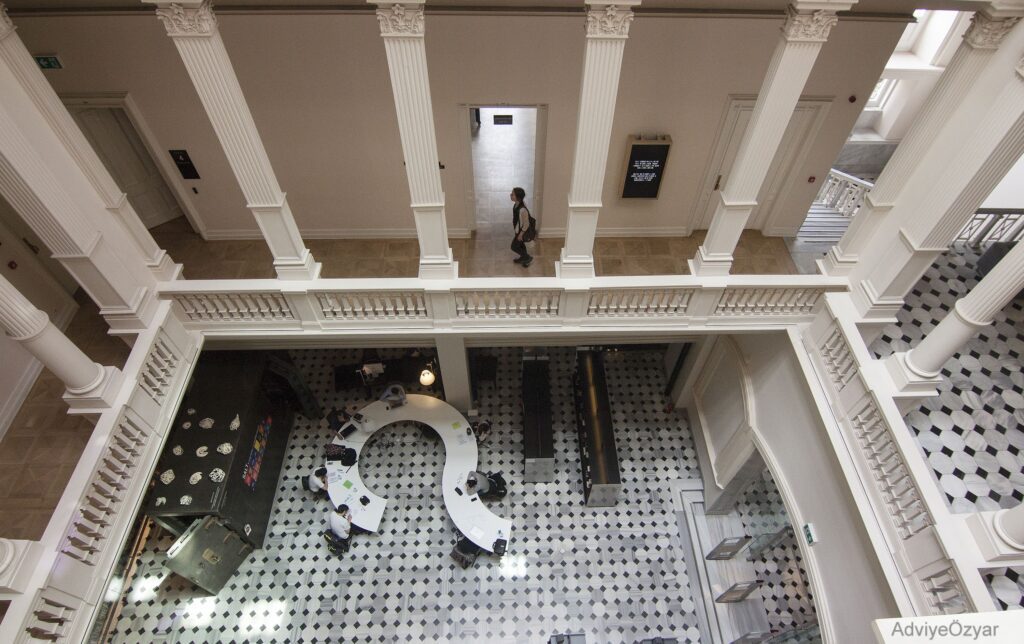
SALT Galata, one of the most important art institutions of Istanbul, is housed in the former Ottoman Bank building. The building is considered by many as an architectural masterpiece due to its distinct architectural styles—neoclassical and oriental—applied on opposite façades. SALT Research is located in the first floor of the building and serves as a public library with a large selection of books including in English, Turkish, and French. Approximately 100.000 printed publications, under a 40.000 different title, are available in SALT Galata Library. Beside the physical resources SALT also has a very rich digital archive.
SALT Research collections mainly cover Istanbul oriented content. There visual and textual sources are mostly on the modern art history of Turkey and the transformation of the Turkish society following the foundation of the Turkish Republic.
Depo Istanbul (Map)

Depo Istanbul is a cultural center that hosts art exhibitions, workshops and collaborative platforms for artists from all around the world to discuss social and political issues. The building that Depo resides in was used to be a tobacco storage until 1950’s and was part of a significant industrial plan during first decades of the republic. 9th Istanbul Biennial in 2005 has become the rebirth of the structure and triggered several other exhibitions to take place in this abandoned building. In 2008, restoration process has started and Depo Istanbul installed its first exhibition in 2009. The current exhibition in Depo Istanbul is “Reality is Beautiful”. The exhibition consists of Mary Moon’s avant-garde paintings and installations that depict the city within the human body.
Museum of Innocence (Map)
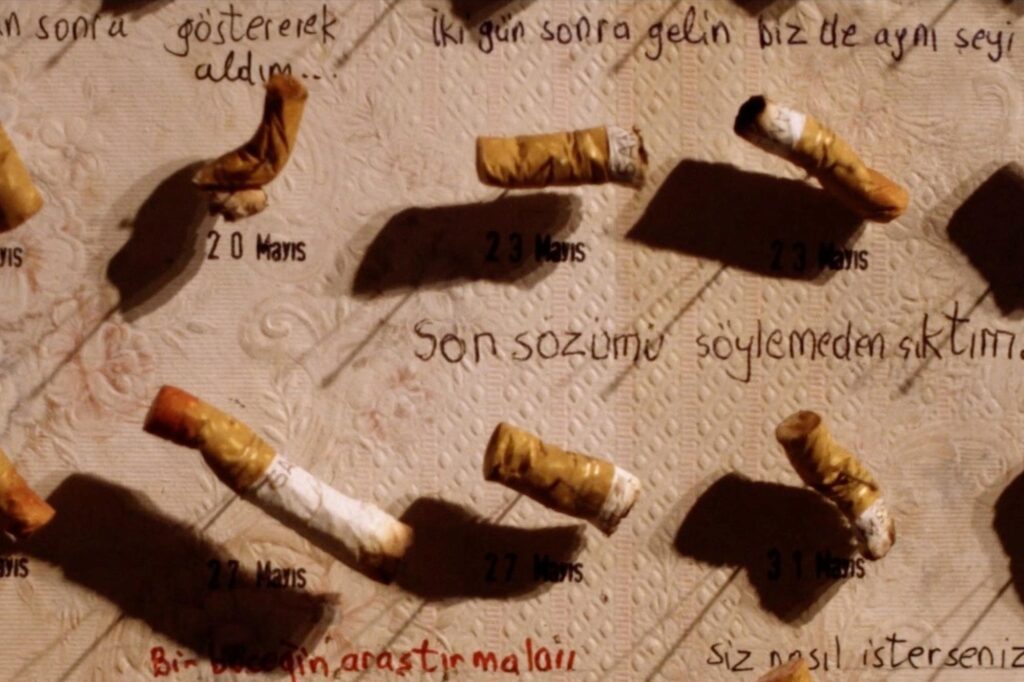
Focusing on the popular and bestselling novel of the same name by famous Turkish author Orhan Pamuk, the Museum of Innocence is full of everyday items showcasing a nostalgic side of Istanbul’s history and literature.
Istanbul Military Museum (Map)

The Military Museum is one of the largest and most famous of its kind, illustrating epochs from the Seljuk period on to the period of the Republic. The collection, donning weaponry such as rifles, revolver pistols, and swords is extraordinary. Continuing with more specific articles like field glasses and telephones, canteens, lamps, helmets, and powder horns. The exhibition not only holds pieces of the Turkish and Ottoman histories, but also from significantly involved countries of World War II including the United States, Great Britain, and Germany. You do not have to be a military buff to be impressed by this place. You can learn about the beginning of the Ottoman Empire, the Turkish migrations, as well as the roots of Turkish language. The museum is open Wednesday through Sunday between 9 am – 5 pm and closed Monday and Tuesday. After your visit, you should not miss our Mehter Takımı (military band) performance! They play traditional Turkish military music and be able to sense the magnificent time when the army was the uniting element of national awareness.
Galata Mevlevihanesi (Whirling Dervish House and Museum ) (Map)

The Galata Mevlevi Lodge (or Galata Mevlevihanesi) was built in 1491 and was the first Mevlevi house in Istanbul. It ceased to function as dervish tekke (lodge) in 1925 and opened as a museum in 1975 (after a brief spell as a school). It underwent a major refurbishment between 2005 and 2009 and now serves as a museum about the Mevlevi Sufi Islam sect. This Galata museum is low key affair, but offers an insight into a Turkey you won’t find elsewhere with information on the culture, music and traditions of the Mevlevi, and so is worth including on any Galata tour.
Turkish and Islamic Arts Museum (Map)
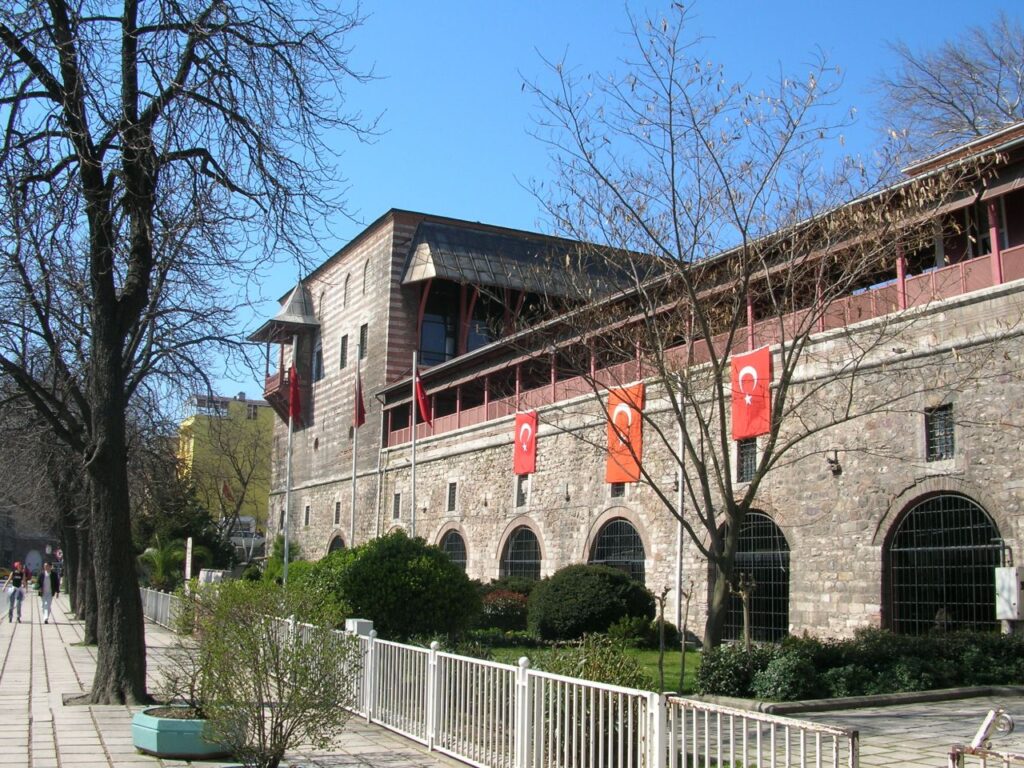
The Museum of Turkish and Islamic Arts was the first museum in Turkey to bring together works of Islamic art. It was founded in 1914 as the Museum of Islamic Foundations and housed in the Imaret building of the Süleymaniye Complex, built by the great Turkish architect Sinan in the 16th century. The museum was renamed the Museum of Turkish and Islamic Arts after the declaration of the republic and moved to its present location in the 16th-century Ibrahim Paşa Palace in 1983.
Kalendarhane Mosque (Map)
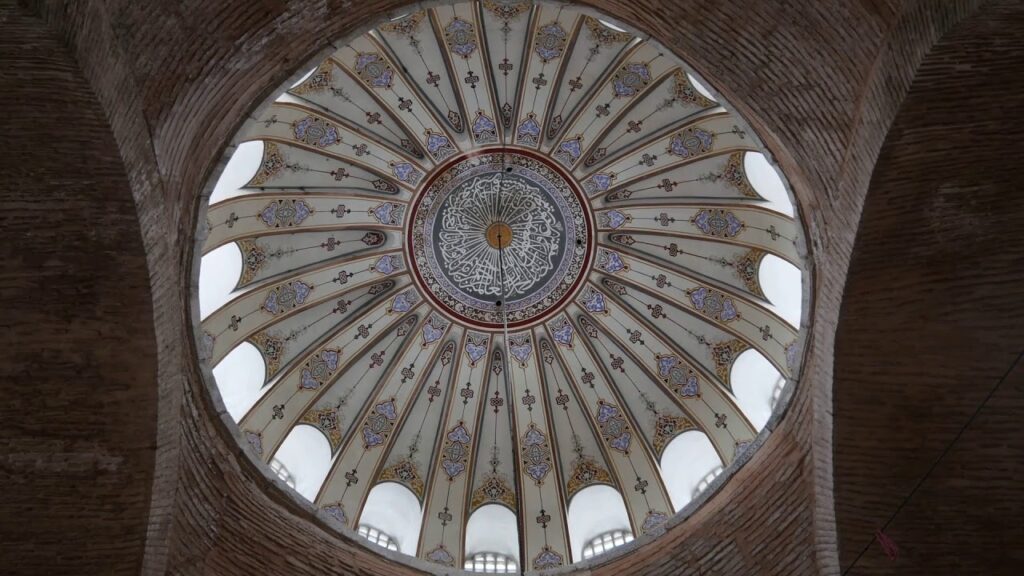
Another beautiful but largely unknown mosque in Istanbul that stands out with its red brick interior, Kalenderhane Mosque (Kalenderhane Camii) is one of the Byzantine churches that was converted into a mosque after the conquest of Constantinople by the Ottomans in 1453, such as Hagia Sophia, Zeyrek Mosque (Pantokrator Monastery) or Fethiye Mosque (Pammakaristos Church). It was dedicated to Virgin Mary and is very probable that its name of the church was the Church of Theotokos Kyriotissa, meaning Virgin the mother of God. Built on top of a fifth or sixth century Roman bath complex, the Church of Theotokos Kyriotissa was built in the twelfth century during the Komnenian Dynasty and functioned as a Greek Orthodox Byzantine church until 1453. In 1453, after the conquest of Constantinople the church was assigned to the Kalenderi Dervishes and they used the structure as a zaviye (Islamic religious school) and imaret (soup kitchen). The original marble decoration of the structure is still surviving similar as Hagia Sophia and Chora Museum. After the Latin Conquest of Constantinople by the Fourth Crusader in 1204, the church was used by the Catholic Crusaders as a Roman Catholic Church and they decorated the southern chapel of the church with the frescoes portraying the life of St. Francis. Today, the frescoes can be seen at the second floor of the Istanbul Archaeological Museums.
Beylerbeyi Palace (Map)
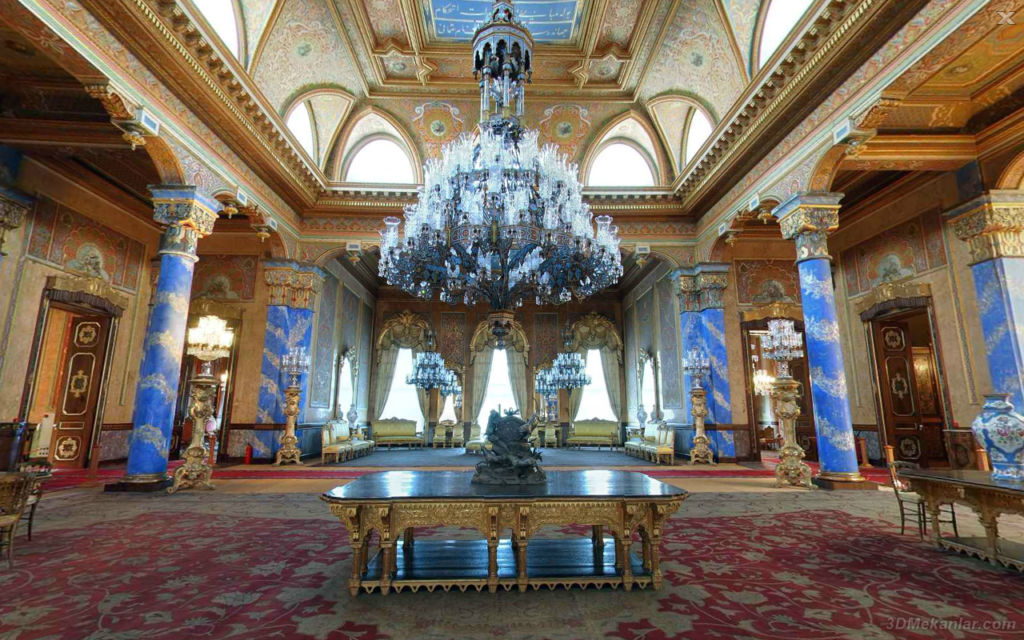
Described by some as a miniature Dolmabahce Palace but without the crowds, the Beylerbeyi Sarayı (Beylerbeyi Palace) was commissioned by Sultan Abdülaziz to act as an imperial summer residence. With 24 rooms, 6 halls, and a hamam, it would have been quite the summer home, and was also used to entertain visiting dignitaries. The opulence of the white marble exterior (designed by architects Hagop Balyan and Sarkis Balyan and completed in 1865) is matched by the lavish interior, which features French clocks, Bohemian crystal chandeliers, and porcelain vases. Some of the furniture, such as the dining chairs in the harem and selamlik, were carved by Sultan Abdülhamit II during the six years he was imprisoned here, until he died in 1918. After her stay in 1869, Empress Eugénie was so impressed with what she saw when she stayed here in 1869, that she had the windows copied in the Tuileries Palace in Paris.
Ortaköy Mosque (Map)
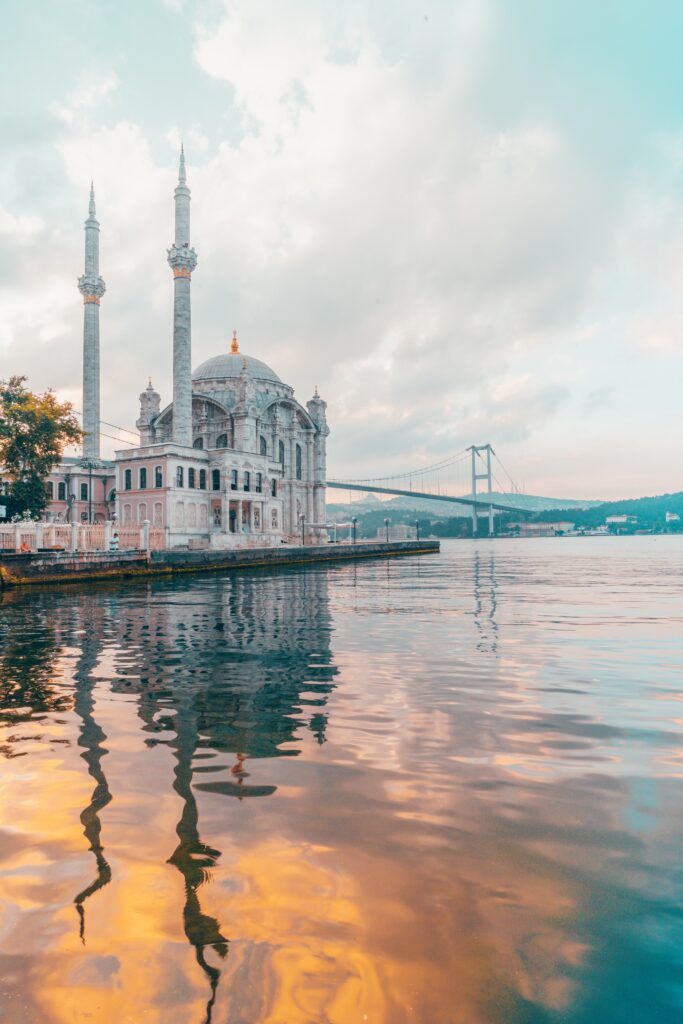
Built on the sight of an 18th century mosque (built by Mahmut Ağa, the son-in law of Grand Vizier Ibrahim Pasha), the current building was completed in 1855, to serve as the Büyük Mecidiye Camii (Grand Imperial Mosque) to the Ottoman Sultan Abdülmecid. It was designed by Armenian architect, Garabet Balyan, and his son Nigoğayos Balyan, who were also responsible for the nearby Dolmabahce Palace. It is neo-Baroque in style, with an ornate exterior, and large windows that allow light to flood into its plainer interior.
Phanar Greek Orthodox College (Map)
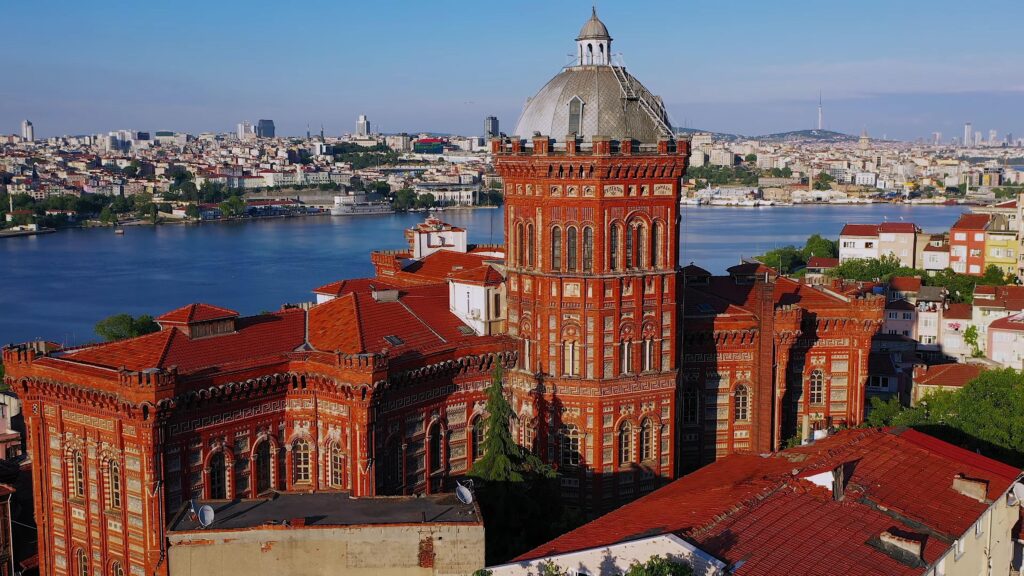
Rising Hogwarts-like from the urban jumble, this Fener landmark, known locally as kırmızı kale (the red castle) for its castellated red-brick facade, still functions as a Greek school. A small student body of some 50 pupils studies here. Built in the early 1880s, it was designed by Ottoman Greek architect Konstantinos Dimadis, who is known for his European chateaux. The institution within predates the Ottoman arrival in Constantinople, making it Turkey’s oldest educational body.
Fener Greek Orthodox Patriarchate (Map)

The Greek Orthodox Patriarchate Istanbul has been the spiritual center of the Greek Orthodox world since around 1600. Officially the seat of the Ecumenical Patriarchate of Constantinople, it is known locally as the Fener Rum Patrikhanesi (Fener Greek Patriarch), it could be considered the Vatican of Eastern Orthodox church, and the 18th century Aya Yorgi Kilisesi, Istanbul (Church of St. George, Istanbul), which stands in the grounds of it, attracts coachloads of pilgrims from Greece for Sunday mass, particularly at Easter time.
Church of St Stephen of the Bulgars (Map)
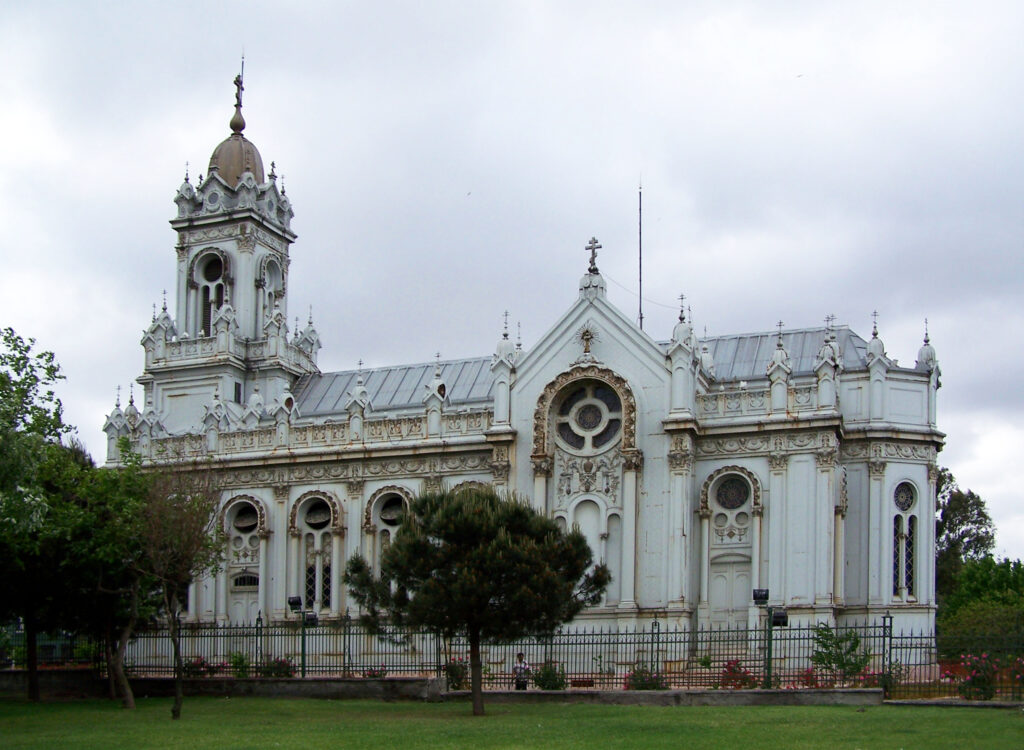
Known as the ‘Iron Church’, this distinctive Gothic Revival–style building on the Golden Horn has an extremely beautiful interior, with its gilded iron screens, balcony and columns glinting in the hazy light that filters in through stained-glass windows. It looks set to stay that way for years to come after an extensive restoration completed in early 2018. While these days we’re accustomed to kit homes and self-assembled furniture, back in 1871, when this church was constructed from cast-iron pieces shipped down the Danube and across the Black Sea from Vienna on 100 barges, the idea was extremely novel. The congregation comprises members of the Bulgarian Orthodox Exarchate (Bulgarian Orthodox Church), which broke away from the Greek Ecumenical Orthodox Patriarchate in 1872.
Bodrum Mosque (Myrelaion Church) (Map)
The building of the Byzantine church called Myrelaion, now known as the Bodrum Mosque or Mesih Pasha Mosque, is one of the inconspicuous buildings located in the neighbourhood of Laleli in Istanbul. Choked on three sides by ugly apartment buildings, it remains a modest reminder of the former palace complex of the same name. However, its unusual history is worth remembering as an excellent illustration of how confusing and twisted were fates of the inhabitants and the buildings of Constantinople. When looking more closely at the history of this building, you come across two extremely ambitious characters, separated by over half a thousand years, but somehow strongly connected by their great ambitions, remarkable political careers, and the involvement in the fate of the Myrelaion building. The story begins in the village called Lakape, somewhere between Melitene and Samosata in eastern Anatolia. There, a simple boy from the Armenian peasant family with a rather unusual name Theophylact was born. Hence the later ancestral name of Lekapen was added to the titles of his descendants. Theophylact the Unbearable (Theophylaktos Abastaktos) became a soldier, and his career began with a heroic deed: during the battle of Tephrike (now Divriği) he saved the life of Emperor Basil I. He was awarded a position in the Imperial Guard in Constantinople, a long way from his home.
Hagia Irene
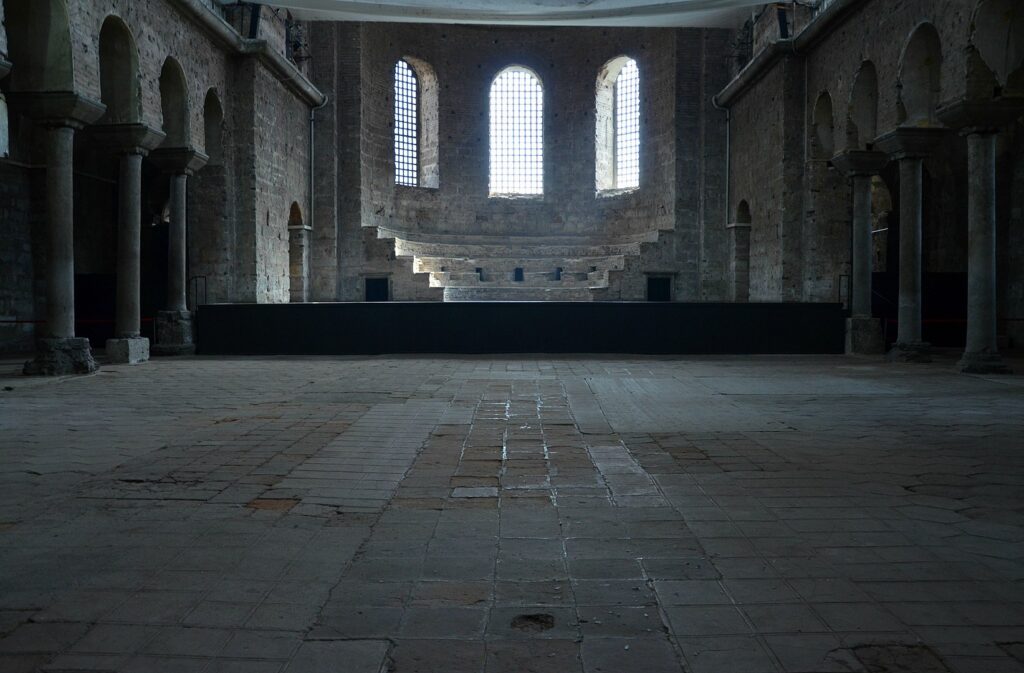
Inside the walls of Topkapi Palace is another magnificent building that is worth your consideration. Although it lacks the level of opulence and grandeur that define its younger sister, the Hagia Sophia, the Hagia Irene is a historical gem. Of all Byzantine churches in Istanbul, the Hagia Irene has the longest history. It was first commissioned by the emperor Constantinople in the 4th century before it was destroyed during the Nika revolt and rebuilt by Emperor Justinian in the 6th century. Two centuries later, the Hagia Irene was damaged again by an earthquake. As a result of the iconoclasm, the church was rebuilt in a much simpler architecture and, naturally, lost most of its grandeur in the process. Rather than striking mosaics and frescoes like those in the Hagia Sophia, several modest figures were engrained on its walls to keep the church simple. When the Ottomans occupied Constantinople, the Hagia Irene functioned as an armory, while the neighboring Hagia Sophia was used as a mosque. In the 19th century, it changed into a military museum and then an archeology museum. Today, the church serves as a museum that entertains those interested in the historical side of things than in the glamour and rich decorations.

